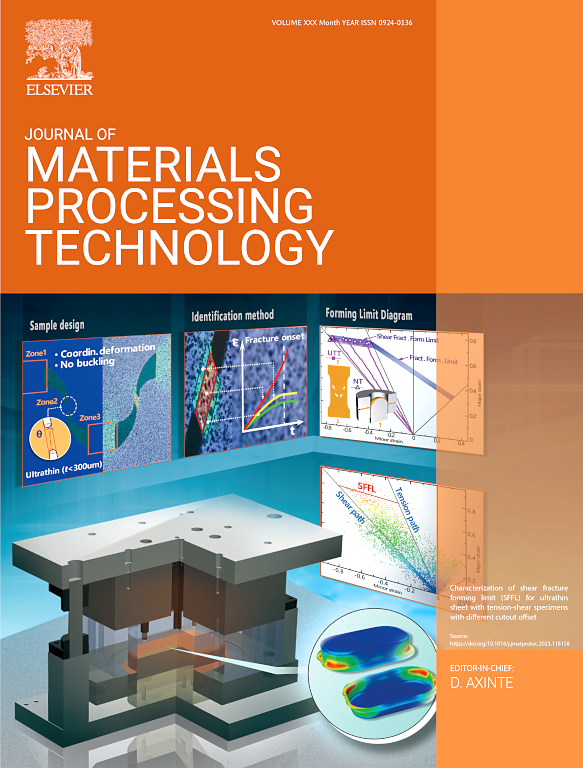Grain structure and microstructural properties of 2139 Al alloy based on additive units ordering stack via wire-arc directed energy deposition
IF 6.7
2区 材料科学
Q1 ENGINEERING, INDUSTRIAL
Journal of Materials Processing Technology
Pub Date : 2025-01-22
DOI:10.1016/j.jmatprotec.2025.118742
引用次数: 0
Abstract
In this study, the heat and mass transfer processes of wire-arc directed energy deposition were investigated by introducing the concept of the additive units ordering stack. The relationship between the process parameters and formed dimensions was used to accurately predict the critical height of thermal equilibrium and establish process schemes to achieve thermal balance. A 2319 Al alloy part having fully equiaxed grains was fabricated. The impact of thermal equilibrium on the forming precision, microstructure, and mechanical properties was examined. After thermal equilibrium was achieved, the dimensions of the deposited layers stabilized, with a volumetric removal rate indicating a forming accuracy of 0.22 %, which was significantly better than the accuracy of 3.02 % achieved in non-equilibrium zones. The porosity-distribution density decreased, and the average hardness values exhibited a low standard deviation of approximately ±5.46 HV0.2. Thermal-equilibrium conditions optimized the mushy zone, leading to a uniform equiaxed microstructure with an average grain size of 44.2 μm and minimal size deviation between adjacent axial grains. Thermal equilibrium mitigated the effects of temperature differences on Cu atom diffusion, enhanced the microstructural uniformity, and achieved a tensile-strength consistency of 99.4 % in all directions, with average tensile strengths of 182.3 ± 0.9 and 183.33 ± 1.3 MPa in the transverse and longitudinal directions, respectively. This approach represents a fundamental advancement in achieving thermal equilibrium during the deposition process, offering new insights for improving forming accuracy and performance anisotropy.
求助全文
约1分钟内获得全文
求助全文
来源期刊

Journal of Materials Processing Technology
工程技术-材料科学:综合
CiteScore
12.60
自引率
4.80%
发文量
403
审稿时长
29 days
期刊介绍:
The Journal of Materials Processing Technology covers the processing techniques used in manufacturing components from metals and other materials. The journal aims to publish full research papers of original, significant and rigorous work and so to contribute to increased production efficiency and improved component performance.
Areas of interest to the journal include:
• Casting, forming and machining
• Additive processing and joining technologies
• The evolution of material properties under the specific conditions met in manufacturing processes
• Surface engineering when it relates specifically to a manufacturing process
• Design and behavior of equipment and tools.
 求助内容:
求助内容: 应助结果提醒方式:
应助结果提醒方式:


